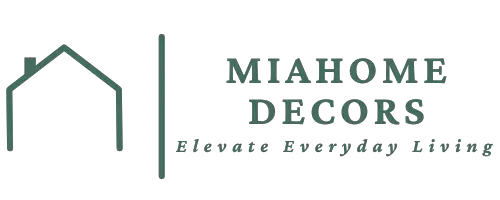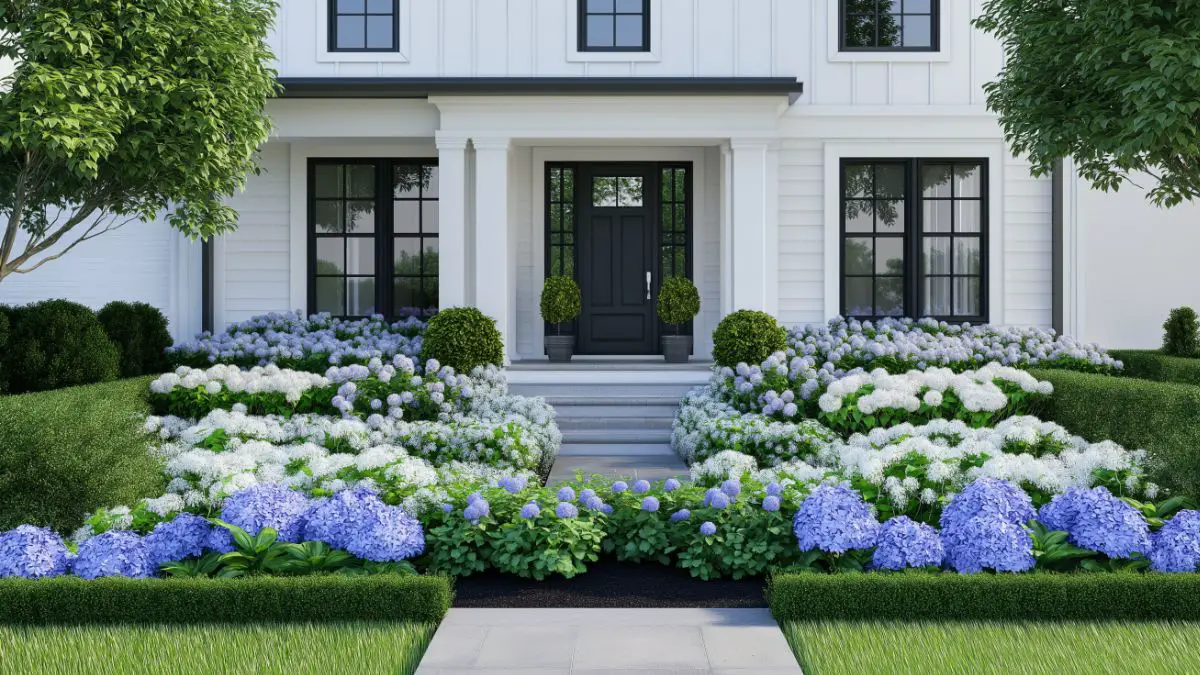Flower Bed Ideas in Front of House to Enhance Curb Appeal
Table of Contents
Introduction
Did you know that a well-designed front yard can increase your home’s perceived value by up to 10%? According to the National Association of Realtors, curb appeal isn’t just about looks—it’s about creating a welcoming impression that resonates from the moment someone sees your home. And one of the easiest, most cost-effective ways to achieve that? Flower beds.
Whether you’re updating a blank canvas or giving an outdated yard a modern refresh, adding or improving your flower beds can transform your front yard from ordinary to outstanding. The right plants, layout, and edging not only introduce color and texture but also frame your home’s architectural features in the most flattering way.
In this guide, we’ll explore creative and practical flower bed ideas that elevate curb appeal—no matter the size or style of your front yard. From layered designs and color schemes to edging techniques and seasonal planting tips, you’ll find inspiration that brings charm and personality to your home’s exterior.
In-Depth Outline
1. Design Principles for Front Yard Flower Beds
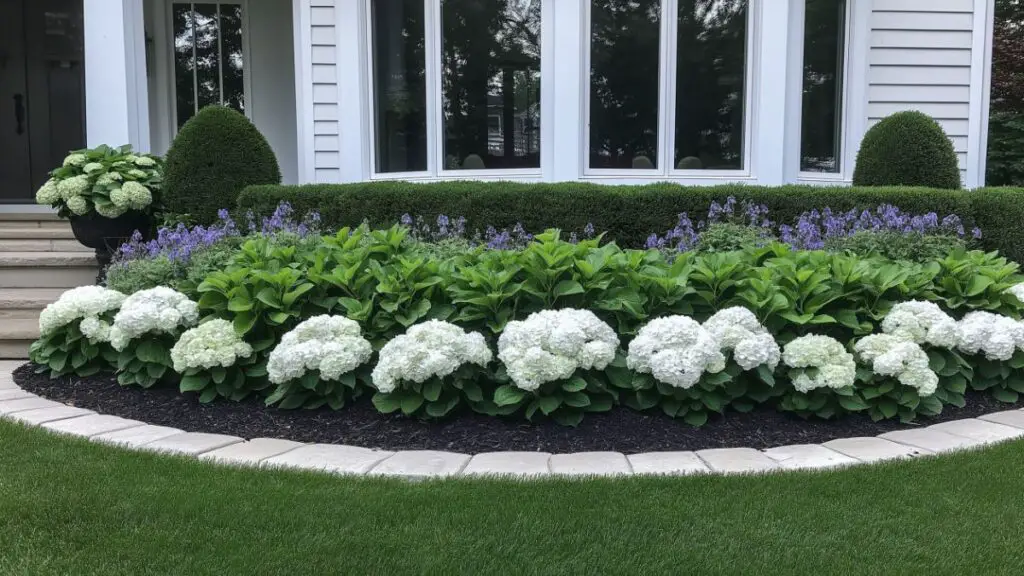
- Choose symmetrical layouts for traditional homes and asymmetrical for modern appeal.
- Use the “thriller, filler, spiller” approach for layered depth.
- Repeat plant colors or shapes to create visual flow.
- Keep taller plants in the back or center (for island beds).
- Always consider the scale of the bed in relation to your home.
Table: Design Elements Based on Home Style
| Home Style | Best Flower Bed Layout | Suggested Elements |
|---|---|---|
| Colonial/Farmhouse | Symmetrical, framed beds | Boxwoods, hydrangeas |
| Modern | Asymmetrical, clean lines | Ornamental grasses, sedum |
| Cottage | Layered, curved edges | Mixed perennials, climbing roses |
2. Best Plants to Use for Front Yard Flower Beds
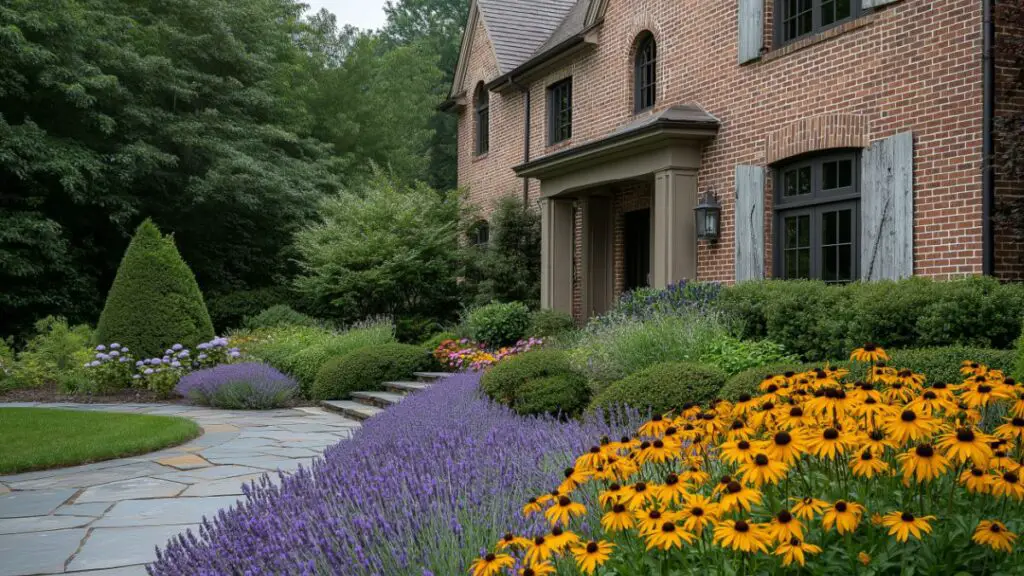
- Choose a mix of evergreens, perennials, and seasonal color.
- Use drought-tolerant options like lavender or salvia for low-maintenance.
- Incorporate native plants for ecological benefit and hardiness.
- Add flowering shrubs like hydrangeas, spirea, or dwarf roses.
- Use groundcover like creeping thyme or ajuga to fill in gaps.
Table: Easy-Care Flower Bed Plants
| Plant Type | Examples | Benefit |
|---|---|---|
| Evergreen Structure | Boxwood, dwarf spruce | Year-round shape and greenery |
| Colorful Perennials | Black-eyed Susan, daylily | Long-blooming, pollinator-friendly |
| Groundcover Fillers | Ajuga, creeping Jenny | Softens edges, reduces weeding |
3. Flower Bed Shapes and Placement for Maximum Impact

- Use curved beds to soften hard edges and driveways.
- Straight beds work well along walkways or porches.
- Island beds add interest to larger front lawns.
- Wrap beds around corners of the house to visually ground it.
- Don’t block windows—choose plant heights carefully.
Table: Bed Shapes and Placement Tips
| Bed Shape | Best Location | Design Impact |
|---|---|---|
| Curved | Near walkway/driveway | Organic flow, softness |
| Straight/Linear | Against foundation | Clean and structured |
| Island | Open lawn area | Bold focal point |
4. Using Color and Texture to Enhance Visual Appeal
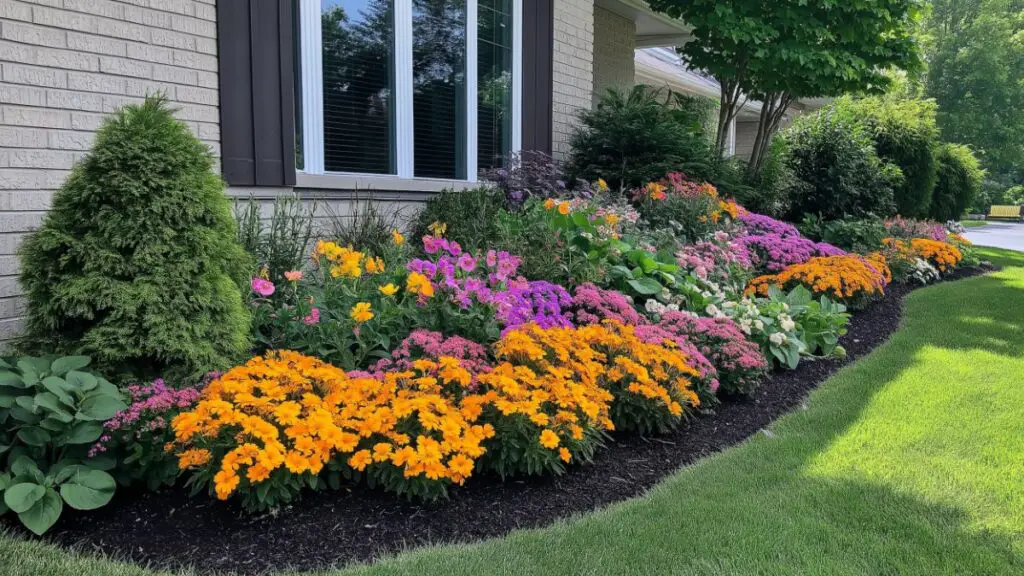
- Combine different foliage textures (fine vs. broad leaves).
- Use complementary colors (e.g., purple and yellow) for high contrast.
- Stick to a monochromatic palette for a modern, minimalist look.
- Repeat colors throughout the bed to tie the design together.
- Add seasonal pops like tulips in spring or mums in fall.
Table: Color Scheme Examples
| Color Scheme | Sample Plants | Design Style |
|---|---|---|
| Cool Tones (Blue/Purple) | Salvia, lavender, Russian sage | Relaxed, elegant |
| Warm Tones (Red/Orange) | Coneflower, coreopsis, yarrow | Bold, energizing |
| Monochrome (Whites) | White begonias, hydrangeas, dusty miller | Clean, timeless |
5. Edging Techniques for a Polished Look
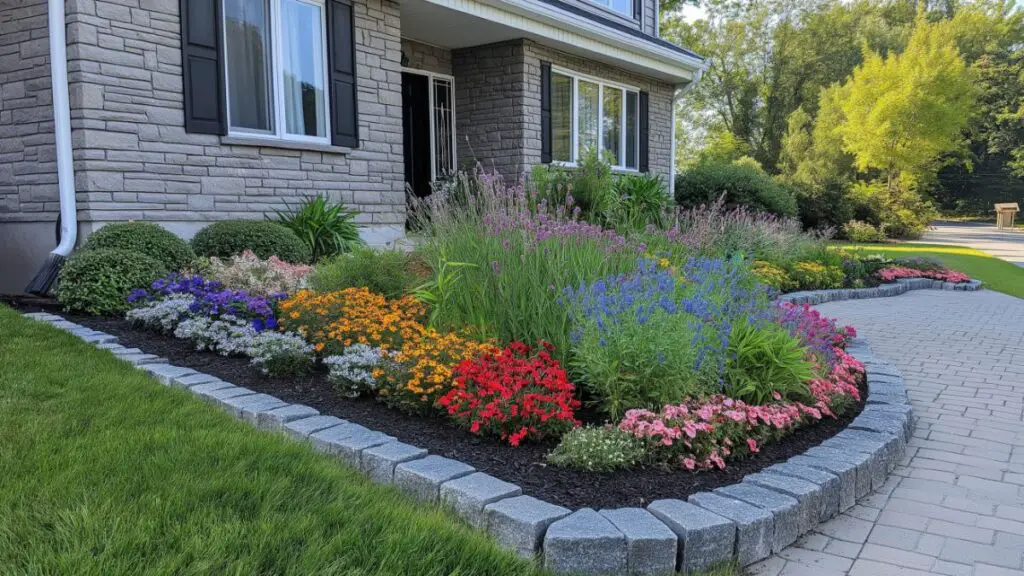
- Define bed borders with stone, brick, or metal edging.
- Natural edging (spade-cut) offers a soft, cottage look.
- Use low hedges or groundcover for living borders.
- Keep grass from creeping in with hardscape edging.
- Match edging materials to your home’s exterior for cohesion.
Table: Edging Options
| Edging Material | Style Effect | Maintenance Level |
|---|---|---|
| Stone | Rustic/traditional | Medium |
| Metal | Sleek, modern | Low |
| Natural Cut Edge | Casual, soft | High (needs re-cutting) |
6. Seasonal Flower Bed Planning for Year-Round Beauty
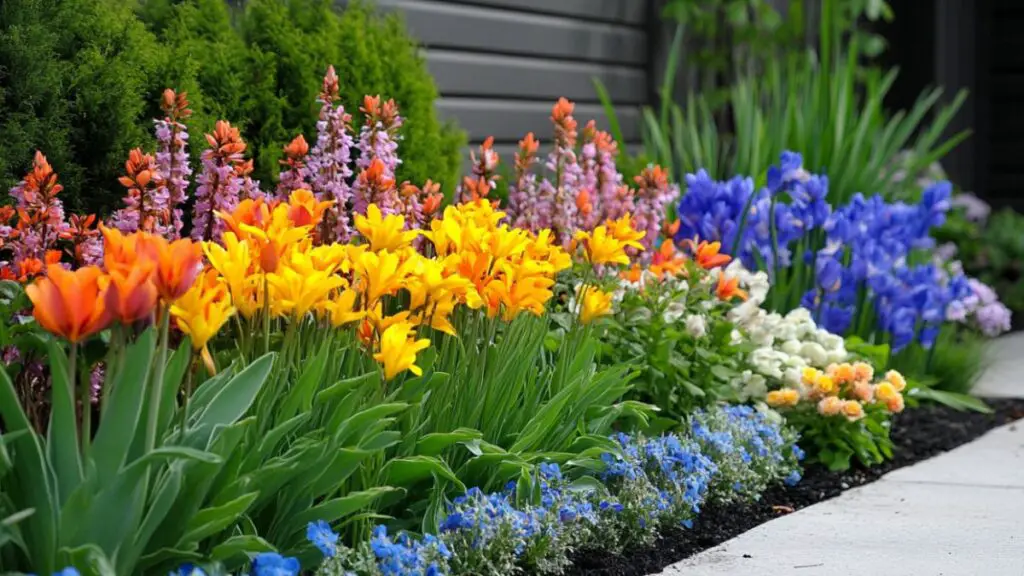
- Layer bulbs for spring (daffodils, tulips, crocus).
- Use heat-loving summer bloomers (zinnias, petunias, daylilies).
- Incorporate fall foliage plants and chrysanthemums.
- Add evergreens and dried hydrangeas for winter interest.
- Swap out annuals seasonally for fresh curb appeal.
Table: Seasonal Planting Plan
| Season | Plant Suggestions | Benefit |
|---|---|---|
| Spring | Daffodils, hyacinths, pansies | Early color, cheerful welcome |
| Summer | Coneflowers, lantana, black-eyed Susans | Heat tolerant, vibrant |
| Fall | Mums, ornamental kale, asters | Rich color, cool-weather hardy |
| Winter | Dwarf evergreens, hellebores, twigs | Structure + subtle elegance |
Detailed Content Expansion
2. Best Plants to Use for Front Yard Flower Beds
Choosing the right plants is essential for front yard flower beds that look good year-round and require minimal upkeep. Start by defining your plant layers: structure, color, and filler.
For structure, use evergreen shrubs like boxwoods or dwarf conifers. They add form, stay green all year, and anchor your beds visually—even in winter.
Next, focus on long-blooming perennials. These provide color without the need to replant every season. Some reliable favorites include black-eyed Susans, coneflowers, and salvia. They attract pollinators and are typically drought-resistant.
Finally, fill in gaps with low-growing groundcovers or mounding annuals. Plants like ajuga or creeping Jenny spill over the edge and soften hard lines. For color, use pansies or petunias in spring and switch to begonias or impatiens in summer.
When planning, consider your local climate, sun exposure, and soil drainage. A mix of textures and bloom times ensures visual interest across seasons.
Table: Easy-Care Flower Bed Plants
| Plant Type | Examples | Benefit |
|---|---|---|
| Evergreen Structure | Boxwood, dwarf spruce | Year-round shape and greenery |
| Colorful Perennials | Black-eyed Susan, daylily | Long-blooming, pollinator-friendly |
| Groundcover Fillers | Ajuga, creeping Jenny | Softens edges, reduces weeding |
4. Using Color and Texture to Enhance Visual Appeal
Great curb appeal doesn’t just come from planting pretty flowers—it’s about how you combine color and texture to create a cohesive, dynamic design.
Start with a base palette of two to three main flower colors. Consider pairing cool tones like purple and blue for a calming look, or warm colors like orange and red for energy and drama. To make your design cohesive, repeat colors across multiple beds or pots.
Texture plays an equally important role. Pair broad-leafed plants like hostas or hydrangeas with finer textures like feathery grasses or salvia. This contrast keeps the eye moving and adds depth to your beds.
Monochrome gardens—like all white or all green—can be stunning in modern settings. Add variation through texture to prevent a flat appearance.
Finally, don’t forget seasonal transitions. Use bulbs for spring, heat-tolerant perennials for summer, and shrubs or evergreens for winter appeal. The more layers you build, the more year-round beauty you’ll enjoy.
Table: Color Scheme Examples
| Color Scheme | Sample Plants | Design Style |
|---|---|---|
| Cool Tones (Blue/Purple) | Salvia, lavender, Russian sage | Relaxed, elegant |
| Warm Tones (Red/Orange) | Coneflower, coreopsis, yarrow | Bold, energizing |
| Monochrome (Whites) | White begonias, hydrangeas, dusty miller | Clean, timeless |
Conclusion
A thoughtfully designed front yard flower bed can do more than just make your home look beautiful—it can elevate your property value, enhance your entry experience, and even boost your mood. By layering plants, choosing colors strategically, and incorporating structural and seasonal interest, your front yard can become a standout feature of your home’s curb appeal. Whether you’re working with a narrow strip or a spacious lawn, these flower bed ideas are sure to help you grow something you’ll love coming home to.
